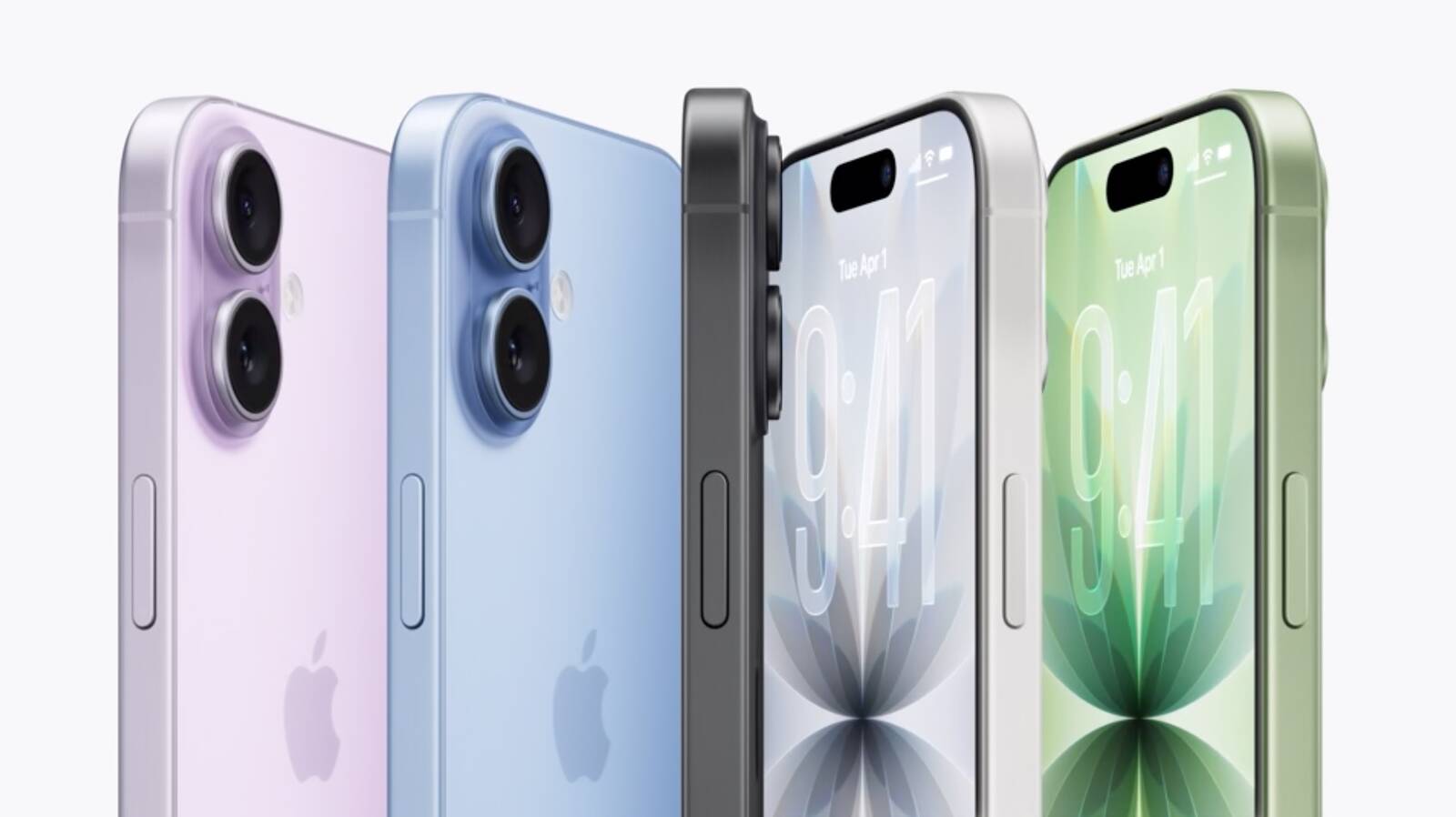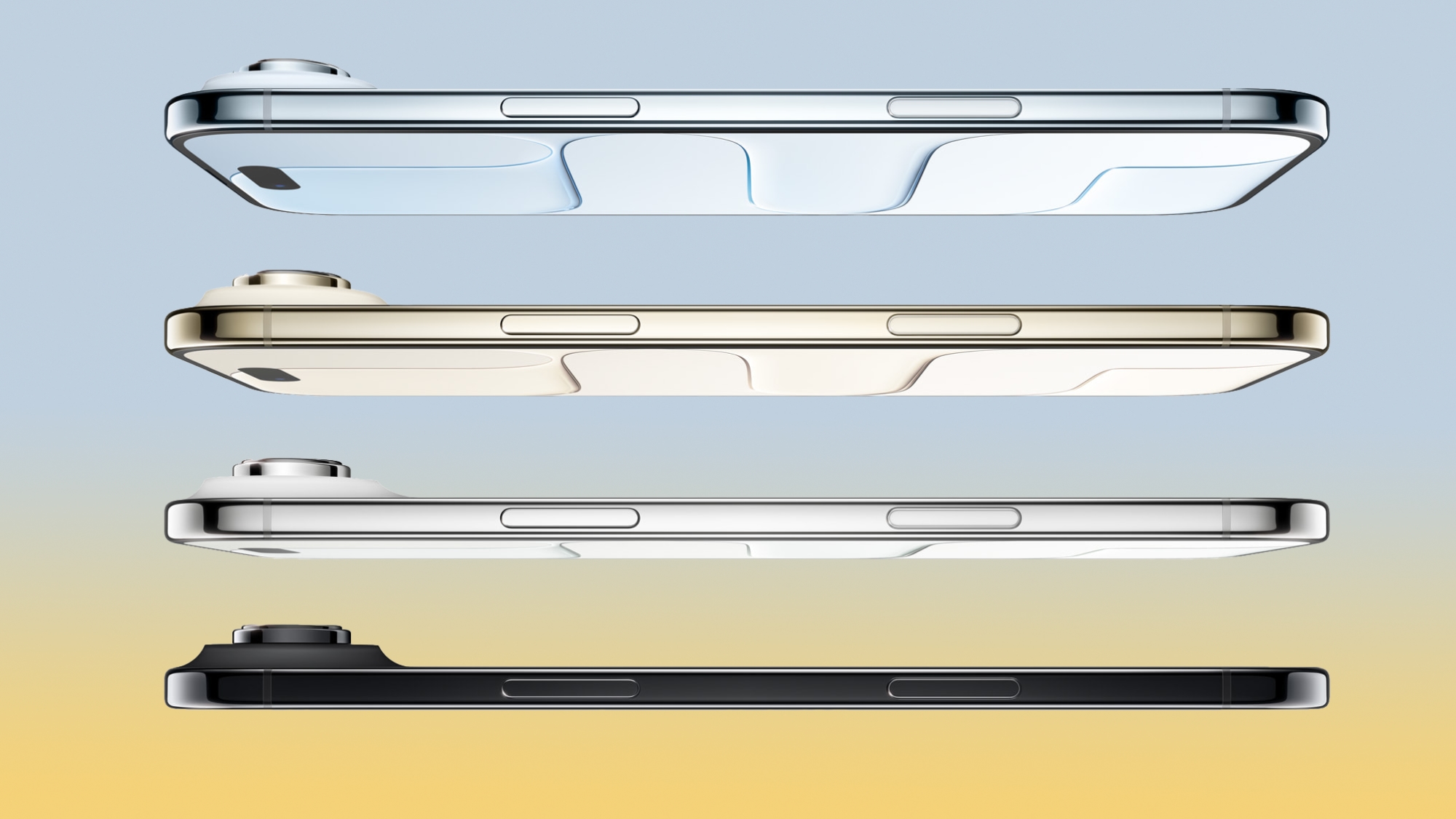09.12.2025
Apple will launch its new iPhone 17 lineup and ultra-thin iPhone Air in stores on Friday, September 19, and the company has already shown off the new devices at its

The iPhone 17 series brings a host of new features and enhancements. Here's a rundown of the biggest upgrades and changes:
iPhone 17

Display Changes
- The iPhone 17 now comes with a 6.3-inch display, up from 6.1 inches, making it the same size as the iPhone 17 Pro. The larger screen means the device is a little taller, thicker, and heavier than the iPhone 16, though slimmer bezels help offset some of the increase.
- Apple has equipped the phone with a Super Retina XDR OLED display protected by Ceramic Shield 2, which is said to deliver three times better scratch resistance than the previous version.
- The display also gains ProMotion support, enabling adaptive refresh rates up to 120Hz. This brings smoother scrolling and animations while also unlocking Always-On display functionality.
- Brightness has been upgraded as well, with peak outdoor brightness rising to 3000 nits from 2000 nits. Typical brightness remains at 1000 nits, while HDR content can still reach up to 1600 nits.
New Camera Technology
- An upgraded 18-megapixel front-facing camera improves selfies and video calls, while a square sensor allows for capturing portrait and landscape photos without rotating your iPhone. It also supports Center Stage for wider views when capturing images and taking video calls.
- The Center Stage front camera enables ultra-stabilized video in 4K HDR, and users can now record on the front and rear cameras simultaneously with Dual Capture.
- A new 48MP Fusion Ultra Wide camera captures up to 4x the resolution compared to the previous generation. The upgrade means iPhone 17 features all 48MP rear cameras for the first time.
Processor Upgrades
- The iPhone 17 is equipped with an A19 chip built on Apple's third-generation 3-nanometer node. It includes a 6-core CPU and 5-core GPU, with each GPU core featuring a Neural Accelerator designed to improve on-device generative AI and other system-intensive tasks.
- There's also an upgraded 16-core Neural Engine, an updated display engine, and a new image signal processor.
Battery Innovations
- Thanks to the new A19 chip and an Apple-designed N1 networking chip, the iPhone 17 is more efficient for improved battery life. It lasts up to 30 hours when watching videos, or up to 27 hours when streaming – more than 6 hours longer than the iPhone 16.
- Charging speeds have also been improved. The iPhone 17 can fast charge to 50 percent in 20 minutes with a 40W or higher power adapter. It can also reach 50 percent in 30 minutes with a MagSafe charger, and supports both MagSafe and Qi2 wireless charging at 25W.
iPhone Air

Design
- At 5.6mm thick, the iPhone Air is Apple's thinnest ever iPhone, more than 3mm thinner than the iPhone 17 Pro. It features a polished titanium frame with a 6.5-inch display. Titanium is stronger than aluminum, and the iPhone Air was designed not to bend, making it more durable than any previous iPhone.
- Apple designed a camera "plateau" on the back of the iPhone Air that houses the 18-megapixel front-facing camera, the TrueDepth system for Face ID, the single-lens 48-megapixel rear camera, an Apple silicon chip, and a speaker.
- The iPhone Air includes all the same buttons and features as the iPhone 17 models, such as the Action button and Camera Control button.
Display
- The display matches the other iPhone 17 models, offering 1000 nits maximum brightness, 1600 nits peak HDR brightness, and 3000 nits peak outdoor brightness.
- It supports ProMotion with 120Hz refresh rates, which also enables Apple's Always-On display technology.
- Apple has added an improved anti-reflection coating to reduce glare.
Processor
- The iPhone Air is powered by the A19 Pro chip, the same processor used in the iPhone 17 Pro, but with one fewer GPU core.
- The chip includes a 6-core CPU with two performance cores and four efficiency cores, paired with a 5-core GPU and 12GB of RAM.
- Each GPU core features a Neural Accelerator, which Apple says delivers 3x more peak GPU compute for improved on-device AI and other demanding tasks.
Camera Technology
- The single-lens rear camera uses the same 48-megapixel Fusion lens as the iPhone 17, supporting 1x and 2x zoom along with 28mm and 35mm focal lengths.
- Apple added a Dual Capture feature that lets you record with the front and rear cameras at the same time. The 18-megapixel Center Stage front camera also includes improved stabilization.
- The front-facing camera allows selfie photos in portrait or landscape mode without rotating the phone, and it supports Center Stage for video calls.
Battery Life
- The iPhone Air's battery lasts up to 27 hours when watching video or 22 hours when streaming video.
- Apple designed a $99 MagSafe battery pack for the iPhone Air that extends battery life to as much as 40 hours.
- The iPhone Air supports up to 20W wireless charging speeds. It can also fast charge, reaching 50% in 30 minutes with a 20W or higher power adapter.
iPhone 17 Pro and iPhone 17 Pro Max

Design Changes
- The camera bump is now called the camera plateau, a horizontal pill-shaped raised area that spans nearly the entire rear of the iPhone. It houses the three-lens camera system on the left and the LiDAR Scanner and flash on the right.
- The iPhone 17 Pro and Pro Max feature a unibody aluminum frame for the first time, replacing titanium. Aluminum is lighter and disperses heat more effectively. The frame extends across the sides, the camera area, and the back, with the exception of a MagSafe charging cutout.
- The MagSafe cutout is made from upgraded Ceramic Shield 2, which Apple says is 4x more resistant to cracks than glass. Its slightly different color gives the iPhone 17 Pro models a subtle two-tone design.
- The aluminum frame enhances thermal performance, while an internal vapor chamber cooling system further helps move heat away from the processor and spread it across the chassis.
Display Changes
- The iPhone 17 Pro models now support 3000 nits peak outdoor brightness, up from 2000 nits on the iPhone 16 Pro models. A new anti-reflective coating reduces glare and doubles outdoor contrast.
- The display is protected by Ceramic Shield 2, which Apple says offers 3x better scratch resistance than glass.
Camera Upgrades
- For the first time, all iPhone 17 Pro cameras are 48 megapixels, including the Main lens, the Ultra Wide lens, and a new Telephoto lens that supports 4x and 8x optical zoom, plus up to 40x digital zoom.
- All three cameras support 4K video recording, with added features such as ProRes RAW video, Log 2 video recording, and Genlock support for professional workflows.
- The 18-megapixel Center Stage front camera includes improved stabilization. A Dual Capture mode lets you record with the front and rear cameras simultaneously, and the front camera supports both portrait and landscape selfies without rotating the phone.
Processor Upgrades
- The iPhone 17 Pro models are powered by the A19 Pro chip, built on an upgraded 3-nanometer process. It features a 6-core CPU with two performance cores and four efficiency cores, along with a 6-core GPU.
- Each GPU core includes a Neural Accelerator, which Apple says improves performance for tasks such as on-device AI.
- The chip also includes an updated 16-core Neural Engine, second-generation dynamic caching, a larger cache, and 12GB of RAM.
Battery Innovations
- The iPhone 17 Pro models offer major improvements to battery life. The iPhone 17 Pro lasts up to 33 hours when watching videos, while the iPhone 17 Pro Max lasts up to 39 hours, the longest ever in an iPhone.
- Charging is faster than before, with both models able to reach 50 percent charge in 20 minutes using a compatible charger. They also support MagSafe and Qi2.2 wireless charging at up to 25W.
- Versions of the iPhone 17 Pro and Pro Max with an eSIM instead of a physical SIM include larger batteries.
Color Options
- iPhone 17: Lavender, Mist Blue, Sage, Black, and White.
- iPhone Air: Space Black, Cloud White, Light Gold, and Sky Blue.
- iPhone 17 Pro: Cosmic Orange, Silver, and Deep Blue.
Pricing
The full selection of iPhone models and storage options available from Apple is as follows:| 128GB | 256GB | 512GB | 1TB | 2TB | |
|---|---|---|---|---|---|
| iPhone 16e | $599 | $699 | $899 | ||
| iPhone 16 | $699 | ||||
| iPhone 16 Plus | $799 | $899 | |||
| iPhone 17 | $799 | $999 | |||
| iPhone Air | $999 | $1,199 | $1,399 | ||
| iPhone 17 Pro | $1,099 | $1,299 | $1,499 | ||
| iPhone 17 Pro Max | $1,199 | $1,399 | $1,599 | $1,999 |
Apple has discontinued the iPhone 15, iPhone 15 Plus, iPhone 16 Pro, and iPhone 16 Pro Max to focus on its newest models. The standard iPhone 16 now comes only with 128GB of storage, while the iPhone 16 Plus is limited to 128GB and 256GB options.
Pre-orders for the iPhone 17, iPhone Air, iPhone 17 Pro, and iPhone 17 Pro Max are now open on Apple's online store and via the Apple Store app, with a global launch to follow on Friday, September 19.
Along with the new iPhone 17 models, on the same day Apple will launch the next-generation Apple Watch Series 11 and Apple Watch Ultra 3, as well as new AirPods Pro 3.
For in-depth information on everything we know about the iPhone 17 series, follow the links to our dedicated iPhone 17, iPhone Air, and iPhone 17 Pro roundups.
Related Forum: iPhone
This article, "iPhone 17 Models Launch on September 19 With These New Features" first appeared on MacRumors.com
Discuss this article in our forums
You may also be interested in this
iPhone 17 Air: Everything…
09.23.2024
In 2025, Apple is expected to discontinue the iPhone "Plus" device in its iPhone 17 lineup to make way for an iPhone "Air" – although it may not actually be
Apple Designing Chips for…
05.08.2025
Apple is working on new chips that are destined for smart glasses that would compete with Meta's Ray-Bans, reports Bloomberg. The chip is in development now, with Apple targeting mass
Apple Reports 2Q 2024 Res…
05.02.2024
Apple today announced financial results for the second fiscal quarter of 2024, which corresponds to the first calendar quarter of the year. For the quarter, Apple posted revenue of $90.8
WWDC 2025: What to Expect…
06.03.2025
WWDC is less than a week away, and as we ramp up to the big announcement, we're going to share details on what we know about each operating system. We're
Apple Likely Planning to …
11.12.2024
Apple previously confirmed that iOS 18.2 will be released in December, and now a potential release date within the month has surfaced. We believe that Apple is likely planning to
Apple Plans to Stop Provi…
08.30.2023
Apple is planning to eliminate social media support advisor roles across Twitter, YouTube, and the Apple Support Community website starting later this year, according to multiple sources familiar with the
Apple Seeds Fourth Develo…
09.17.2024
Apple today provided developers with the fourth betas of iOS 18.1, iPadOS 18.1, and macOS Sequoia 15.1 to continue testing Apple Intelligence features. The third betas come two weeks after
MacRumors 2025 Blood Driv…
05.01.2025
MacRumors is pleased to announce our Sixteenth Annual MacRumors Blood Drive, throughout the month of May 2025. Let's save lives together by encouraging donations of blood, platelets, and plasma, and


